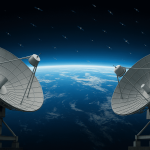
Network Troubleshooting Guide: Fix Issues Fast & Easy
Are you tired of dealing with slow internet or dropped connections? Our Network Troubleshooting Guide will help you identify and resolve common problems quickly. Whether you’re working from home, streaming your favorite shows, or gaming online, understanding and fixing network issues is essential for a smooth digital experience.
What Is a Network Troubleshooting Guide?
A Network Troubleshooting Guide is your step-by-step roadmap for diagnosing and solving connectivity problems. These include slow speeds, dropped connections, “No Internet” errors, or IP conflicts. Knowing what to look for and how to fix it saves time and keeps you productive.
Why Network Issues Happen
Problems outlined in any Network Troubleshooting Guide often come from three main sources:
-
Hardware faults – damaged cables, overheating routers, or faulty network cards.
-
Software issues – outdated firmware, driver errors, or misconfigured settings.
-
Interference – signal congestion, overlapping Wi-Fi channels, or nearby electronic devices.
Understanding the cause is the first step toward resolving network challenges effectively.
Spotting Problems with the Network Troubleshooting Guide
Before you fix a problem, you need to know what’s wrong. Look for:
-
Web pages loading slowly or timing out.
-
Frequent Wi-Fi disconnections.
-
Devices failing to connect to the network.
-
Error messages about IP conflicts.
Early detection means faster fixes and less frustration.
Slow Internet Speeds: Network Troubleshooting Guide Steps
Slow internet is one of the most common headaches. Your Network Troubleshooting Guide should start with:
1. Test Your Connection
Use tools like Speedtest.net to compare your actual speed to your ISP’s promised rate. If it’s significantly lower, the bottleneck could be your provider or your home network setup.
2. Optimize Wi-Fi Coverage
Place your router in a central, elevated location, away from walls and interference. This improves signal strength and reduces dead spots.
3. Manage Bandwidth Usage
Too many connected devices slow everything down. Disconnect unused devices or use tools like NetLimiter to prioritize bandwidth for important tasks.
Dropped Connections: Network Troubleshooting Guide Tips
Dropped connections disrupt calls, streaming, and downloads. Here’s how your Network Troubleshooting Guide tackles them:
-
Restart Your Router – Power cycling clears temporary glitches. Unplug for 30 seconds, then reconnect.
-
Update Firmware – Visit your router’s admin panel and install the latest updates to patch known issues.
-
Reduce Interference – Cordless phones and microwaves can affect Wi-Fi. Use a Wi-Fi analyzer to select the least crowded channel.
No Internet Access: Network Troubleshooting Guide Fixes
Seeing a “No Internet” message? Here’s how your Network Troubleshooting Guide recommends resolving it:
-
Check Cables – Loose or damaged Ethernet cables are often to blame.
-
Reset Network Settings – On Windows, use the “Network Reset” option in Settings.
-
Contact Your ISP – Outages may be affecting your area. Visit their status page or call support.
IP Address Conflicts: Network Troubleshooting Guide Advice
When two devices have the same IP address, connection problems occur.
-
Release & Renew IP – In Command Prompt, type:
-
Enable DHCP – Let your router assign IP addresses automatically via its settings page.
Security Threats: Network Troubleshooting Guide Protection
Network slowdowns or interruptions aren’t always technical glitches sometimes they’re caused by malicious activity.
-
Secure Your Wi-Fi – Use WPA3 encryption and a strong, unique password. See our Wi-Fi Security Tips from CISA.
-
Scan for Malware – Use trusted tools like Malwarebytes to detect and remove network-hogging malware.
Tools to Support the Network Troubleshooting Guide
A great Network Troubleshooting Guide includes handy tools for faster diagnosis:
-
Ping & Traceroute – Check connectivity and pinpoint where data delays occur.
-
Wireshark – Analyze network traffic to find bottlenecks or suspicious activity.
-
PRTG Network Monitor – Track network usage patterns for proactive problem-solving.
Essential Network Skills Every Admin Needs in 2025
Prevent Problems with the Network Troubleshooting Guide
Prevention is better than repair. Follow these proactive steps:
-
Regular Maintenance – Update routers and devices monthly. Check cables for wear.
-
Monitor Traffic – Keep an eye out for unusual activity to prevent slowdowns.
For more ongoing tips, visit our IT Solutions Blog for regular updates and expert advice.
Conclusion
A well-prepared Network Troubleshooting Guide helps you tackle slow internet, dropped connections, “No Internet” errors, IP conflicts, and even security threats. By following these steps, you can maintain a fast, reliable, and secure network saving yourself hours of frustration.
Learn to Diagnose and Fix Network Bottlenecks Fast
FAQs
Q: What are the most common network problems?
A: Slow speeds, dropped connections, no internet access, and IP conflicts are the most frequent issues.
Q: How do I fix slow Wi-Fi?
A: Check speed, optimize router placement, and reduce device usage.
Q: Why does my connection keep dropping?
A: Likely due to outdated firmware or interference. Restart your router and update firmware.
Q: How can I prevent future network problems?
A: Regular maintenance, secure Wi-Fi, and monitoring network traffic help avoid future issues.
Author Profile
- Hey there! I am a Media and Public Relations Strategist at NeticSpace | passionate journalist, blogger, and SEO expert.
Latest entries
 HPC and AIOctober 23, 2025AI HPC Backbone Driving Autonomous Vehicle Innovation
HPC and AIOctober 23, 2025AI HPC Backbone Driving Autonomous Vehicle Innovation Data AnalyticsOctober 23, 2025Boost Analytics with Modern Data Observability Tools
Data AnalyticsOctober 23, 2025Boost Analytics with Modern Data Observability Tools NetworkingOctober 22, 2025Satellite Internet Future: Starlink, OneWeb & Beyond
NetworkingOctober 22, 2025Satellite Internet Future: Starlink, OneWeb & Beyond Computer Aided-EngineeringOctober 22, 2025Will Quantum Computing CAE Revolutionize Engineering?
Computer Aided-EngineeringOctober 22, 2025Will Quantum Computing CAE Revolutionize Engineering?

